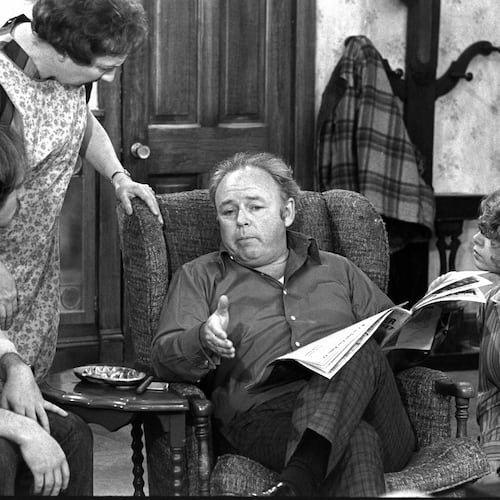In discussing the $400 million Race to the Top grant that Georgia won last week, U.S. Education Secretary Arne Duncan said he was not concerned that the November election might usher in new state leadership ambivalent about the federal dollars and anxious about the federal oversight.
“This is bigger than any governor or any school chief,” he said. “Hundreds and hundreds of individuals put in a huge amount of hours and came up with a great plan. This isn’t about any one person.”
But is it about 10 or 20 people? Georgia is about to elect a new governor and new school superintendent who could be leery, if not hostile, to federal intrusion into Georgia schools. That new regime might well result in a whole new slate of leadership at the state Department of Education. So it could be that more than a few contributors to the state’s Race to the Top application are not in place come January.
GOP school chief candidate John Barge has already had an apparently mutually unsatisfying stint at DOE, and some agency officials say privately it is unlikely that he would keep them on staff or that they would stay.
While Barge says he will accept Race to the Top funds now that Georgia has won one of the coveted grants, he has also said, “In my view, the amount of money we could receive from Race to the Top does not justify yet more federal government intrusion and bureaucratic micromanagement of our local schools.”
And Republican gubernatorial candidate Nathan Deal has been so conflicted on whether he would even accept Race to the Top dollars that he prompted Sonny Perdue to give a little speech for his sake at the press conference where the governor announced the grant: “I want to say once again, for many who have feared that this is federal intrusion, the feds gave us no rules. They said, you put together a plan that you can implement.”
And that is why the governor’s policy director, Erin Hames, has moved to the DOE, to convert the 200-page Race to the Top application into action. Two hours into her new DOE chief of staff job Thursday, the former-teacher-turned-attorney talked to me about why all of Georgia, not just the 26 partner school districts, should be thrilled with the grant.
These districts, which make up 41 percent of public school students in Georgia, are: Atlanta, Ben Hill, Bibb, Burke, Carrollton, Chatham, Cherokee, Clayton, Dade, DeKalb, Dougherty, Gainesville, Gwinnett, Hall, Henry, Jones, Meriwether, Muscogee, Peach, Pulaski, Rabun, Richmond, Rockdale, Spalding, Valdosta and White. By the numbers, the districts include 46 percent of Georgia’s students in poverty, 53 percent of Georgia’s African-American students, 48 percent of Hispanics and 68 percent of the state’s lowest-achieving schools.
These districts get half the $400 million to underwrite a series of innovations and pilots that are outlined in the application, Hames said, but that still leaves $200 million for the refinement of a student information system, the creation of teacher evaluation tools that use student growth as their basis and improved professional development for all educators.
Hames hopes that the new leadership will keep her on the DOE staff, noting that she came to the post with the full support of the State Board of Education. “There are 37 governor’s races right now, so 37 states are going through the same thing,” she said.
“This was developed with a large group of stakeholders and a strong commitment of local Georgia systems,” Hames added. “When the new leadership sees that local commitment, I don’t think this is going to fall apart.”
Susan Walker works with one of those stakeholders; she is policy and research director for the Georgia Partnership for Excellence in Education. There’s concern about the impending leadership shift and about the possibility the state could jeopardize its Race to the Top grant, she said.
“The governor and the state school superintendent have most of the power in how we implement this, so there is this big question mark,” she said.
“I hope that everyone can see that this is a huge chunk of money for a state that is still reeling from the financial crisis,” Walker said. “Ultimately this is going to benefit our kids. It is going to help us keep going with the good things we have put in place. It is important that this momentum continue.”
And if it doesn’t, Secretary Duncan said the feds will call the race. “If any state does not implement well, we will simply stop funding them,” Duncan said.
An unprecedented federal education program that dangled $4.35 billion in competitive grants to accelerate school reforms, Race to the Top will affect 13.6 million students, a million teachers and 25,000 schools in the 12 states that won the money.
“These are taxpayer dollars. We want to make sure that each dollar is spent extremely wisely. We have every hope and every reason to believe that states will be successful,” Duncan said. “But, if at the end of the day, we are feeling that a state is not acting in good faith or doesn’t have the capacity, will or courage to implement their plan, we are absolutely prepared to stop funding a state. ... But I have every confidence that Georgia will do a great job and take student achievement to another level.”
About the Author
Keep Reading
The Latest
Featured

